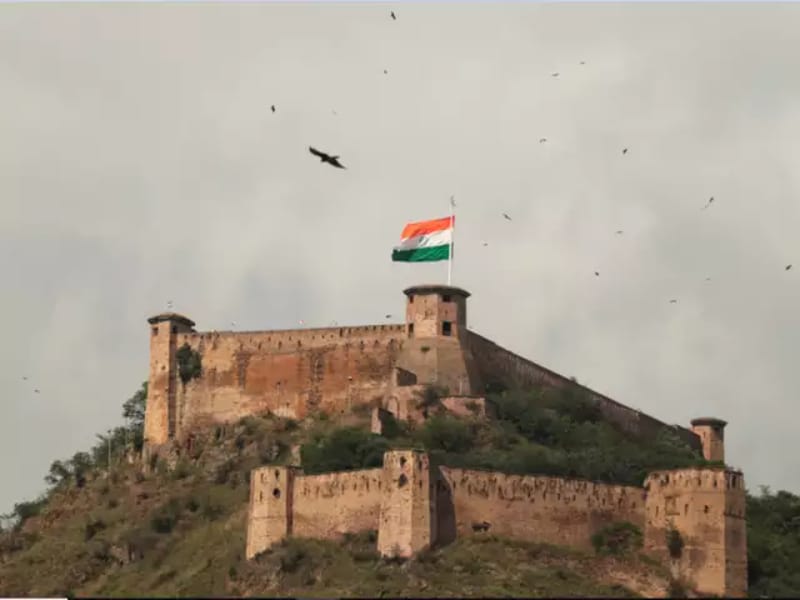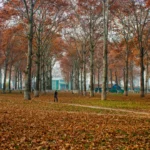Table of Contents
Toggle- Overview
- Introduction: The Allure of Hari Parbat
- A Journey Through Time: The History of Hari Parbat Fort
- Architectural Wonders: What Makes Hari Parbat Fort Special
- Catching the View: Best Photography Points
- Planning Your Visit: Useful Tips and Itineraries
- Must-See Attractions Within the Fort Complex
- Outside the Walls: Attractions Nearby
- Insider Tips: Making the Most of Your Hari Parbat Experience
- Curating Your Best Hari Parbat Itinerary
- Conclusion: Why Hari Parbat Should Be at the Top of Your Kashmir Bucket List
- How to book Kashmir tour online?
- People Also Ask
- What is the history of Hari Parbat Fort?
- Where is Hari Parbat Fort located in Srinagar?
- What is the best time to visit Hari Parbat Fort?
- How do I reach Hari Parbat Fort by road?
- Is there an entry fee for Hari Parbat Fort?
- What are the opening hours of Hari Parbat Fort?
- Can I hire a guide at Hari Parbat Fort?
- Are there photography restrictions inside Hari Parbat Fort?
- What should I wear when visiting Hari Parbat Fort?
- Is Hari Parbat Fort wheelchair accessible?
- How long does it take to explore Hari Parbat Fort?
- Are there restrooms and drinking water facilities at Hari Parbat Fort?
- What religious sites are within Hari Parbat Fort?
- Can I attend festivals at Hari Parbat Fort?
- Is there a museum inside Hari Parbat Fort?
- What are the nearest attractions to Hari Parbat Fort?
- Can I trek to Hari Parbat Fort from Nishat Bagh?
- Is there parking available at Hari Parbat Fort?
- What wildlife or flora can I see around Hari Parbat Fort?
- Are food stalls available near Hari Parbat Fort?
- Is it safe to visit Hari Parbat Fort alone?
- Can I combine a visit to Hari Parbat Fort with Dal Lake activities?
- What are the peak tourist seasons at Hari Parbat Fort?
- How can I include Hari Parbat Fort in a 2-day Srinagar trip?
- Where can I book tickets or tours for Hari Parbat Fort online?
- Inquiry Form
Overview
Perched on a hill above the busy Srinagar cityscape and serene Dal Lake stands the dominant shadow of Hari Parbat Fort—a medieval fortress that is a witness to the complex history and architectural excellence of Kashmir. Whether you are a history enthusiast studying “Hari Parbat Fort history,” a travel enthusiast searching for “things to do at Hari Parbat,” or a photographer in search of the ideal “Kashmir tourist attractions” photo, this comprehensive blog will take you through each aspect of this incredible fortress. From its history and strategic importance to useful advice on how to plan a visit, we have you covered with insider information integrated into the story.
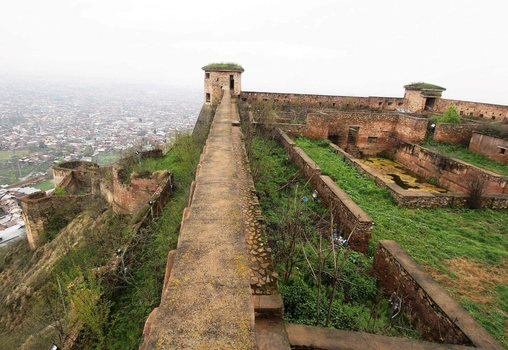
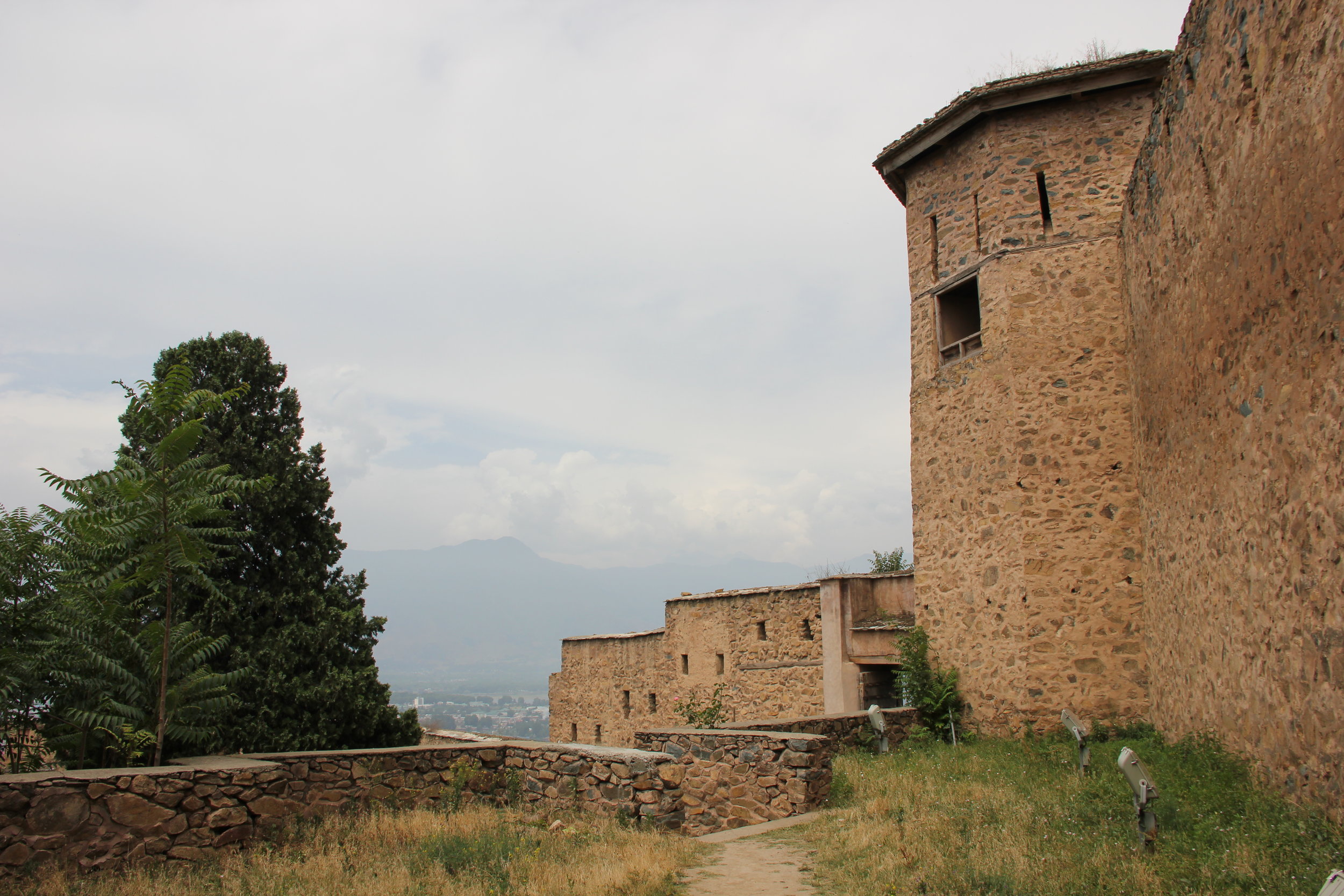
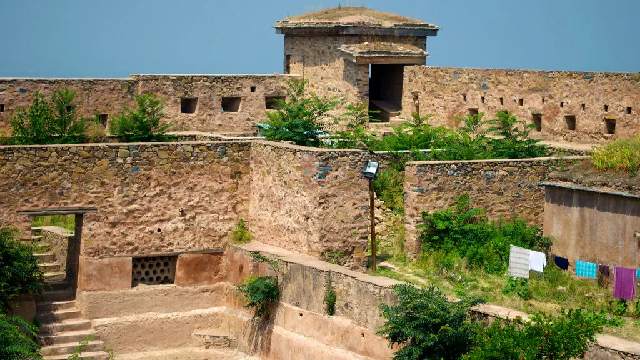
Introduction: The Allure of Hari Parbat
Standing at a height of about 1590 meters from the sea level, Hari Parbat Fort oversees breathtaking views of Srinagar’s old city, the meandering river Jhelum, and peaceful Dal Lake. Traditionally known as Koh-i-Maran (“Mountain of Snakes”) in ancient writings, Hari Parbat is not only a Kashmiri icon, but a religious and cultural melting pot, where pilgrims, historians, and tourists converge.
With keywords such as “visit Hari Parbat Fort” and “Kashmir travel guide” on every traveler’s agenda, this 2000+ word blog peels away the layers of history, architecture, and spirituality that make Hari Parbat a must-visit destination in Jammu and Kashmir.
A Journey Through Time: The History of Hari Parbat Fort
Ancient Beginnings and Buddhist Heritage
Well before Islamic kings or Mughal emperors adorned the slopes of Hari Parbat, the hill itself was worshipped by early Buddhist societies. Archaeological digs have revealed the remnants of Buddhist stupas and monasteries, which point to this hilltop being a beacon of spirituality for centuries. Researchers who look up “Hari Parbat Fort history” tend to find mentions of these ancient remnants, which highlight the status of the fort as a nursery of Buddhist heritage in Kashmir.
The Afghan Period and Fortifications
In the latter half of the 18th century, at the hands of Afghan governor Atta Mohammad Khan, the hill was fortified with strategic defense purposes. The foundation of bastions and ramparts signaled the starting point of the fortress as we know it. History buffs research by typing “Jammu and Kashmir fort architecture” into search bars to learn how these battered defenses were built to protect from invasions of the plains onto the hills.
The Sikh Conquest and Maharaja Hari Singh
The Sikh Empire, led by Maharaja Ranjit Singh, captured Kashmir in the early 19th century. While the fort remained comparatively underutilized militarily, it became more important from an administrative perspective. After that, Maharaja Hari Singh, the final ruling monarch of the princely state of Jammu and Kashmir, made restoration efforts, giving the hilltop its present name, Hari Parbat. This period is usually emphasized by people searching for “Hari Parbat restoration history” in travel websites and history forums.
Post-Independence Changes
Ever since India gained independence in 1947, the fort has undergone changes from a relic of bygone kingdoms to a heritage monument preserved by the Archaeological Survey of India (ASI). It is now a symbol of Kashmir’s stratified past and its resilient spirit, drawing thousands of tourists every year looking “best time to visit Hari Parbat Fort.”
Architectural Wonders: What Makes Hari Parbat Fort Special
The Colossal Ramparts and Bastions
Stretching for more than a kilometer along its perimeter, the ramparts of the fort are dotted with seven bastions at strategic positions. Each bastion has its own story to tell and offers a different vantage point as it relates to siege warfare and defense. People searching for photo essays using keywords such as “Hari Parbat Fort bastions” will find them set against the Himalayan backdrop.
Gateways of Grandeur
In the past, seven gates gave way to the fortress, though not all exist today. Gates like the Shurayar Gate and Gauhar Dur Gate exhibit elaborate stonework carvings and Persian script inscriptions. Several bloggers optimizing for “Hari Parbat Gates” offer high-resolution photos to highlight the craftsmanship that once greeted emperors and merchants alike.
Temples, Shrines, and Mosques
Hari Parbat stands out in Kashmir for the coexistence of religious shrines:
- Sharika Devi Temple: Draws Hindu pilgrims throughout the year, particularly at the annual Navratri festival. Searchers of “Hari Parbat Temple” frequently look for festival dates and photo tours.
- Makhdoom Sahib Shrine: Celebrates a venerated Muslim saint, attracting pilgrims who search “Makhdoom Sahib shrine Hari Parbat.”
- Gurdwara Chatti Patshahi: Celebrates Guru Hargobind’s visit, so “Hari Parbat Gurdwara” is a frequent Sikh pilgrimage search.
This peaceful coexistence of religions makes Hari Parbat a symbol of communal harmony, often represented in content for “Kashmir religious tourism.”
Catching the View: Best Photography Points
Sunrise over Dal Lake
The sunrise panorama from the eastern ramparts is mythical. As dawn light colors Dal Lake pink and gold, photographers looking for “Hari Parbat sunrise photography” set up their tripods to catch this otherworldly moment. Pro tip: Get there at least 30 minutes prior to sunrise for the most advantageous angles.
Panoramic Cityscapes
For wide shots of cityscapes, go to the western side’s highest bastion. The vast expanse of Jhelum River below and Srinagar’s old city maze provide great wide shots.
Close-ups of Stonework
The intricate stone ornaments on the principal gateways and inside the inner courtyard are ideal for close-up macro photography. Search terms such as “Hari Parbat stone architecture close-up” are popular among architecture buffs on photo sharing sites like Instagram and Pinterest.
Planning Your Visit: Useful Tips and Itineraries
Best Time to Visit
Although Hari Parbat is open throughout the year, the ideal time to visit is between March to October. The weather during this time is pleasant with clear skies perfect for exploring the fort and photographing picturesque views. Most travel guides maximizing on “Hari Parbat summer visit” point out this time frame.
How to Reach Hari Parbat Fort
By Road: From Srinagar city center, taxis and auto-rickshaws are a regular occurrence on the road to Hari Parbat. Look up “how to reach Hari Parbat Fort by taxi” for estimated fares and schedules.
By Public Transport: Public buses and shared tempos operate regularly. Google Maps searches for “Hari Parbat Fort bus route” will lead you to the closest stops.
Walking Trails: For hiking fans, a scenic walking path from the Nishat Bagh gardens leads to the fort in around 45 minutes. Search for trail maps and difficulty levels using keywords such as “Hari Parbat trek trail.”
Entry Fees and Timings
The Archaeological Survey of India levies a small entry charge (typically less than ₹10). The fort is open between 8 AM and 6 PM every day. Family packages or group rates are uncommon, so it pays to book ahead. A search for “Hari Parbat entry fee” will usually uncover the current fee structure and seasonal variations.
Local Guides and Audio Tours
Hiring a local guide enhances the experience, turning rocky ruins into living history. Guides typically charge between ₹300 to ₹500 for a 2-hour tour. Alternatively, audio guides (in English and Hindi) are available at the ticket counter. Travelers searching “Hari Parbat audio guide” can book in advance through the ASI website.
Must-See Attractions Within the Fort Complex
Sharika Devi Temple and Its Rituals
Committed to Goddess Durga, the Sharika Devi Temple fascinates with its ancient statue and colorful local myths. The Navratri festival draws thousands, and the hill glows with oil lamps. Bloggers incorporating “Sharika Devi Temple Hari Parbat” tend to witness heavy search volume during festival periods.
Makhdoom Sahib Shrine’s Mystique
The shrine of Shah Hamadan’s follower is full of spiritual calm. Pilgrims conduct qawwali sessions over here on Thursdays, and thus “Makhdoom Sahib qawwali” is a popular search. The combination of music and prayer set against the fort’s stone background is a photojournalist’s heaven.
Historical Museum and Galleries
Recently, the ASI opened a small museum on the fort grounds, exhibiting artifacts from ancient coins to war relics. Travelers searched “Hari Parbat museum artifacts” to view the exhibits online before deciding on a visit.
Outside the Walls: Attractions Nearby
Nishat Bagh and Shalimar Gardens
Below the hill are the world-famous Mughal gardens—Nishat Bagh and Shalimar Bagh—featuring terraced lawns, cascading fountains, and floral beauty. Content incorporating “Hari Parbat and Mughal gardens tour” is apt for travelers looking for a combined package.
Pari Mahal: The Fairy Mansion
Looming over Nishat Bagh, the historic seven-terrace garden of Pari Mahal offers panoramic views.
Dal Lake Houseboat Experiences
No trip to Srinagar is complete without a houseboat experience on Dal Lake. Search terms such as “Hari Parbat Dal Lake houseboat” enable travelers to plan smooth travel arrangements, mixing hilltop explorations with peaceful water stays.
Insider Tips: Making the Most of Your Hari Parbat Experience
- Early Morning Start: Get ahead of the crowds by reaching early at sunrise; experience solitude and untouched photo opportunities.
- Pack Light: The climb up can be steep—pack just water, a light snack, and your camera.
- Footwear Matters: Put on sturdy shoes; the stone trails can be slippery, particularly after rain.
- Cultural Sensitivity: Dress modestly when visiting shrines and temples; bring a shawl or scarf.
- Stay Hydrated: Srinagar’s altitude is deceptive—keep water handy for uphill climbs.
- Local Eats: Enjoy Kashmiri favorites such as rogan josh and noon chai at local cafes after your visit; type “best eateries near Hari Parbat” to get suggestions.
Curating Your Best Hari Parbat Itinerary
Day 1
Morning: Ascend to Hari Parbat Fort, walk ramparts and temples
Afternoon: Lunch at Nigeen Club; Dal Lake photo cruise
Evening: Pari Mahal sunset, followed by houseboat dinner
Day 2
Morning: Nishat Bagh and Shalimar Bagh visit
Afternoon: Buying Pashmina shawls and saffron at Lal Chowk
Evening: Cultural show at Tagore Memorial Hall
Weaving in terms like “Hari Parbat itinerary” and “2-day Srinagar trip” means your blog is going to be read by people planning a structured tour.
Conclusion: Why Hari Parbat Should Be at the Top of Your Kashmir Bucket List
Stretching over two millennia of history, Hari Parbat Fort is not merely an architectural gem but a metaphor for Kashmir’s rich cultural mosaic. From the silent devotion of its shrines to the breathtaking vistas of Dal Lake and Srinagar, each stone and path speaks.
Whether you’re crafting your next travel itinerary, researching “Hari Parbat Fort history,” or simply dreaming of Kashmir’s majestic landscapes, let this comprehensive guide be your starting point. Pack your camera, summon your sense of adventure, and get ready to ascend the storied heights of Hari Parbat—where every step bridges the past and present in unforgettable ways.
How to book Kashmir tour online?
Contact Brown Chinar at +91 6005039532/+91 9906188874 or Email us at: Enquiry@brownchinarkashmir.com
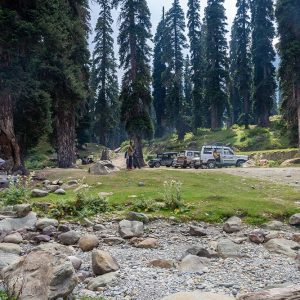
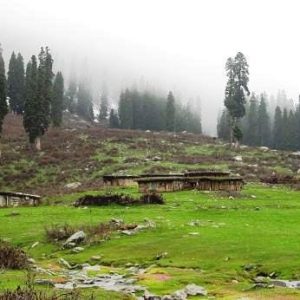
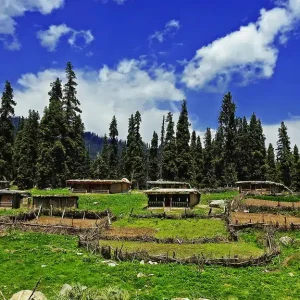
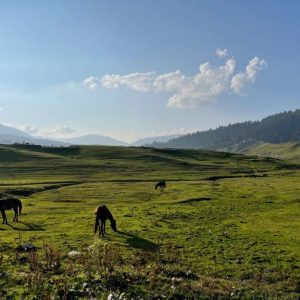
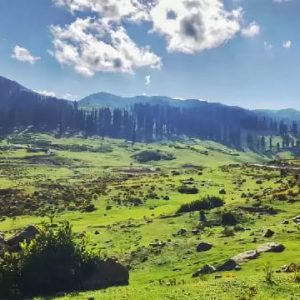
People Also Ask
What is the history of Hari Parbat Fort?
Hari Parbat Fort dates back to ancient Buddhist times, was fortified under Afghan rule in the late 18th century, saw restorations during the Sikh era, and today stands as a heritage monument maintained by the Archaeological Survey of India.
Where is Hari Parbat Fort located in Srinagar?
Hari Parbat Fort sits atop a hill on the western bank of the Jhelum River, overlooking Srinagar’s Old City, just a short drive from Dal Lake and Lal Chowk market.
What is the best time to visit Hari Parbat Fort?
The ideal window to visit is from March to October, when the weather is mild, skies are clear, and photography conditions are optimal.
How do I reach Hari Parbat Fort by road?
You can take a taxi or autorickshaw from Srinagar city center; most drivers are familiar with “Hari Parbat Fort” as a landmark on their GPS.
Is there an entry fee for Hari Parbat Fort?
Yes—there’s a nominal ticket charge (around ₹10 for adults) payable at the ASI ticket counter; children often enter free or at a discounted rate.
What are the opening hours of Hari Parbat Fort?
The fort is open daily from 8:00 AM to 6:00 PM, with last entry usually allowed 30 minutes before closing.
Can I hire a guide at Hari Parbat Fort?
Local guides and audio tours (in English and Hindi) are available at the ticket counter for roughly ₹300–₹500 per session.
Are there photography restrictions inside Hari Parbat Fort?
Photography is generally allowed throughout the ramparts, gates, and religious sites, but drone usage requires special permission from local authorities.
What should I wear when visiting Hari Parbat Fort?
Dress modestly—covered shoulders and knees are recommended, especially when visiting the Sharika Devi Temple and Makhdoom Sahib Shrine.
Is Hari Parbat Fort wheelchair accessible?
Due to steep stone pathways and uneven terrain, full wheelchair access is limited; however, specific sections near the base gate are more accessible.
How long does it take to explore Hari Parbat Fort?
A thorough visit—including ramparts, shrines, and the small ASI museum—takes about 2–3 hours.
Are there restrooms and drinking water facilities at Hari Parbat Fort?
Basic restroom and drinking water facilities are available near the entrance; carrying your own water bottle is still advisable.
What religious sites are within Hari Parbat Fort?
Key sites include the Sharika Devi Temple, Makhdoom Sahib Shrine, and Gurdwara Chatti Patshahi, showcasing Hindu, Muslim, and Sikh heritage.
Can I attend festivals at Hari Parbat Fort?
Yes—Navratri at the Sharika Devi Temple and Thursday qawwali at Makhdoom Sahib Shrine are major draws for pilgrims and tourists alike.
Is there a museum inside Hari Parbat Fort?
A small ASI-run museum displays coins, weapons, and relics; look for “Hari Parbat museum artifacts” online for a sneak peek.
What are the nearest attractions to Hari Parbat Fort?
Nearby highlights include the Mughal gardens of Nishat Bagh and Shalimar Bagh, Pari Mahal terrace gardens, and Dal Lake houseboats.
Can I trek to Hari Parbat Fort from Nishat Bagh?
Yes—a scenic footpath from Nishat Bagh takes about 45 minutes to reach the fort, offering lush valley views along the way.
Is there parking available at Hari Parbat Fort?
Limited paid parking is available near the base; it’s best to arrive early to secure a spot, especially on weekends.
What wildlife or flora can I see around Hari Parbat Fort?
You may encounter Himalayan birds (partridges, bulbuls) and local wildflowers; spring months bring rhododendrons and wild saffron blooms.
Are food stalls available near Hari Parbat Fort?
A handful of local vendors sell snacks, chai, and bottled water; for a full meal, head down to the markets of Srinagar or a nearby café.
Is it safe to visit Hari Parbat Fort alone?
Yes—Hari Parbat is generally safe for solo visitors during daylight hours; always inform someone of your plans and carry a mobile phone.
Can I combine a visit to Hari Parbat Fort with Dal Lake activities?
Absolutely—a morning ascent to the fort followed by an afternoon shikara ride on Dal Lake makes for a balanced Srinagar itinerary.
What are the peak tourist seasons at Hari Parbat Fort?
Peak months are April–June (spring blooms) and September–October (autumn foliage and festivals).
How can I include Hari Parbat Fort in a 2-day Srinagar trip?
Day 1: Morning at Hari Parbat; afternoon shikara on Dal Lake; evening at Pari Mahal.
Day 2: Mughal gardens, local markets, and cultural shows.
Where can I book tickets or tours for Hari Parbat Fort online?
Official ASI tickets and audio guide bookings are available on the ASI website, while local travel sites and Srinagar tour operators offer guided packages.

